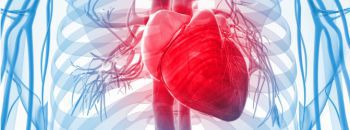
DALLAS, TX -- There are more than 350,000 out-of-hospital cardiac arrests (OHCA) annually in the U.S., nearly 90% of them fatal, according to the American Heart Association’s newly released Heart Disease and Stroke Statistics - 2017 Update. According to the report, the annual incidence of EMS-assessed non-traumatic OHCA in 2015 is estimated to be 356,500. Estimates also suggest 7,037 children suffer OHCA each year.[1]
There are a number of ongoing challenges to understanding the epidemiology of cardiac arrest in the U.S. Despite being a leading cause of death, there are currently no nationwide standards for surveillance to monitor the incidence and outcomes of cardiac arrest. Thus, registries and clinical trials are used to provide best estimates.
The statistical update is produced using the most-recent data available compiled by the AHA, the National Institutes of Health, the Centers for Disease Control and Prevention, and other government sources. OHCA statistics are derived primarily from the Resuscitation Outcomes Consortium (ROC) Epistry, a prospective population-based registry of EMS-attended calls for patients with OHCA in eight U.S. and three Canadian regions, and the Cardiac Arrest Registry to Enhance Survival (CARES), at Emory University School of Medicine, which works with the CDC.
Here are some highlights from the report:
- Among adults treated by EMS, 25% had no symptoms before the onset of arrest.
- The majority of OHCA’s occur at a home or residence (70%). Public settings (20%) and nursing homes (11%) were the second and third most common locations.
- Cardiac arrest was witnessed by a bystander in 37% of cases, and an EMS provider in 12% of cases. It was unwitnessed in 51% of cases.
- Among EMS-treated OHCA patients, 21% had an initial rhythm (Ventricular Fibrillation-VF- or Ventricular Tachycardia- VT), which is shockable by an automated external defibrillator (AED).
- In the ROC Epistry, survival to hospital discharge after EMS-treated cardiac arrest was 11% for patients of any age. Survival after bystander-witnessed ventricular fibrillation (VF) was 37% for patients of any age.[2]
- In the CARES data from 2015, survival to hospital discharge was 11%. For those with a shockable rhythm, survival was 34%.
- According to the ROC Epistry, the incidence of bystander CPR and lay use of AEDs has increased slightly over time. In 2006, 37% of OHCA victims received bystander CPR. In 2015, 44% received bystander CPR. Lay use of AEDs increased from 3% in 2006 to 7% in 2015.
ORIGINAL SOURCE: American Heart Association; Summary compiled by Sudden Cardiac Arrest Foundation
Click here for journal article.
[1] Resuscitation Outcomes Consortium (ROC), June 1, 2014-May 31, 2015
[2] ROC, January 1, 2015-June 30, 2015
